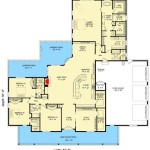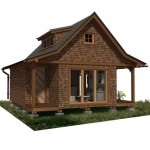Farmhouse Ceiling Fan with Light for Bedroom: A Comprehensive Guide
The integration of a farmhouse ceiling fan with light into a bedroom combines functionality and aesthetics, creating a comfortable and visually appealing space. This design choice offers both efficient air circulation and ambient lighting, contributing to a more pleasant and relaxing bedroom environment. The farmhouse style, characterized by its emphasis on natural materials, rustic textures, and a sense of simplicity, has gained considerable popularity in interior design. When applied to ceiling fans, this aesthetic typically involves incorporating elements like distressed wood finishes, matte black iron accents, and Edison-style light bulbs.
The selection of a suitable farmhouse ceiling fan with light for a bedroom requires careful consideration of several factors, including room size, ceiling height, desired airflow, lighting needs, and the overall decorative scheme. A well-chosen fan can significantly enhance the comfort and style of the bedroom, while a poorly chosen one can detract from the overall ambiance and even hinder functionality. This article provides a detailed overview of the key aspects to consider when selecting and installing a farmhouse ceiling fan with light for a bedroom.
Key Point 1: Understanding Farmhouse Design Elements in Ceiling Fans
The defining characteristics of farmhouse design in ceiling fans revolve around creating a warm, inviting, and slightly rustic atmosphere. This is achieved through several visual and material choices:
Wood Finishes: A primary element is the use of wood finishes that evoke a sense of naturalness and age. These finishes often include distressed wood, weathered oak, or reclaimed wood appearances. The texture and color variations inherent in these finishes contribute to the farmhouse aesthetic. Designers may also use composite materials that mimic the look of real wood while offering enhanced durability and resistance to moisture.
Metal Accents: The incorporation of metal accents, typically in matte black, oil-rubbed bronze, or brushed nickel, adds a touch of industrial or vintage charm. These metal components are often used for the fan housing, blade brackets, and light fixtures. The contrast between the dark metal and the lighter wood tones is a hallmark of farmhouse design, creating visual interest and balance.
Blade Design: The shape and style of the fan blades also play a crucial role in the overall farmhouse look. Blades may feature a wide, paddle-like design, reminiscent of barn doors or rustic farm equipment. Some fans incorporate reversible blades with different finishes on each side, allowing for greater customization and adaptability to changing decor preferences.
Lighting Fixtures: The lighting component of a farmhouse ceiling fan is integral to its design. Edison-style light bulbs, with their warm, amber glow and visible filaments, are a popular choice. These bulbs complement the rustic aesthetic and provide a soft, inviting light. Other lighting options include caged lights or glass shades with a vintage-inspired design. The color temperature of the light bulbs is also important, as warmer tones tend to enhance the cozy atmosphere of a farmhouse-style bedroom.
Overall Aesthetic: The overall design should convey a sense of simplicity and functionality. Overly ornate or intricate details are generally avoided in favor of clean lines and a focus on natural materials. The farmhouse aesthetic is about creating a comfortable and lived-in space, rather than a sterile or overly polished one.
Key Point 2: Selecting the Right Size and Features for Your Bedroom
Choosing the appropriate size and features for a farmhouse ceiling fan with light is essential for optimal performance and visual harmony. The size of the room directly impacts the required fan diameter, while features such as remote control, blade pitch, and motor type influence efficiency and convenience.
Room Size and Fan Diameter: The diameter of the ceiling fan blades should be proportional to the size of the bedroom. For smaller bedrooms (up to 100 square feet), a fan with a blade span of 42 inches or less is typically adequate. Medium-sized bedrooms (100-225 square feet) generally require a 44- to 52-inch fan. Larger bedrooms (over 225 square feet) may benefit from a 54-inch or larger fan, or even multiple smaller fans strategically placed throughout the room.
Ceiling Height and Downrod Length: The height of the ceiling is another critical factor. For standard 8-foot ceilings, a flush-mount or hugger-style fan is often the best option. These fans are designed to sit close to the ceiling, maximizing headroom. For ceilings higher than 8 feet, a downrod is necessary to lower the fan to an optimal height for air circulation. A general rule of thumb is to have the fan blades at least 7 feet above the floor. Downrods come in various lengths, so selecting the appropriate length is crucial for safety and performance.
Airflow and Blade Pitch: The blade pitch, which is the angle of the blades, affects the amount of air the fan can move. A steeper blade pitch generally results in greater airflow. However, a steeper pitch may also require a more powerful motor, which can consume more energy. Look for fans with a blade pitch between 12 and 15 degrees for optimal airflow in most bedrooms. The fan's CFM (cubic feet per minute) rating indicates the volume of air it can move; higher CFM ratings are generally better for larger rooms.
Motor Type and Energy Efficiency: Ceiling fans are typically powered by either AC (alternating current) or DC (direct current) motors. DC motors are generally more energy-efficient and quieter than AC motors. They also often offer more speed settings, allowing for finer control over airflow. Look for Energy Star-rated fans to ensure energy efficiency. These fans meet specific performance standards set by the Environmental Protection Agency (EPA).
Lighting Options and Brightness: The lighting component of the fan should provide adequate illumination for the bedroom. Consider the type of light fixture, the number of bulbs, and the total wattage. LED bulbs are a popular choice due to their energy efficiency, long lifespan, and ability to produce a variety of light colors. Dimmable lights are also a desirable feature, allowing for customizable brightness levels. The appropriate light output depends on the size of the room and the desired level of illumination.
Remote Control and Smart Features: Many farmhouse ceiling fans come with remote controls that allow for convenient adjustment of fan speed, light intensity, and other settings. Some fans also offer smart features, such as Wi-Fi connectivity and voice control compatibility, allowing for integration with smart home systems. These features can add an extra layer of convenience and control to the bedroom environment.
Key Point 3: Installation and Maintenance Considerations
Proper installation and regular maintenance are essential for ensuring the safe and efficient operation of a farmhouse ceiling fan with light. Incorrect installation can lead to performance issues, safety hazards, and even damage to the fan or the ceiling. Regular maintenance will prolong the lifespan of the fan and maintain its optimal performance.
Professional Installation vs. DIY: Installing a ceiling fan typically involves electrical wiring and structural mounting, which can be complex and potentially hazardous. If unfamiliar with electrical work or uncomfortable working at heights, it is recommended to hire a qualified electrician or handyman to install the fan. Professional installation ensures that the fan is properly wired, securely mounted, and balanced for smooth operation.
Safety Precautions: When installing a ceiling fan, always turn off the power at the circuit breaker before starting any work. Use appropriate safety gear, such as gloves and safety glasses. Ensure that the ceiling box is properly rated to support the weight of the fan; if necessary, replace the existing box with a fan-rated box. Follow the manufacturer's instructions carefully, and double-check all connections before restoring power.
Balancing the Fan: After installation, it is important to balance the fan blades to minimize wobble and noise. Most fans come with a balancing kit that includes small weights that can be attached to the blades to correct any imbalance. Follow the instructions in the kit to identify the blade causing the wobble and attach the weights accordingly. If the fan continues to wobble after balancing, double-check all connections and ensure that the blades are properly aligned.
Regular Cleaning: Dust and debris can accumulate on the fan blades and housing over time, reducing airflow and affecting the fan's appearance. Regularly clean the fan blades with a soft cloth or duster. For stubborn dirt, a mild detergent can be used. Be sure to turn off the power before cleaning and avoid getting any moisture into the motor housing. Inspect the fan for any loose screws or connections and tighten them as needed.
Motor Maintenance: The motor of a ceiling fan typically requires minimal maintenance. However, it is important to keep the motor clean and free of dust. Some fans have oil ports that require occasional lubrication; consult the manufacturer's instructions for specific recommendations. If the motor becomes noisy or starts to overheat, it may indicate a problem that requires professional attention.
Light Bulb Replacement: Regularly check the light bulbs in the fan and replace them as needed. When replacing bulbs, use the correct wattage and type of bulb specified by the manufacturer. Be sure to turn off the power before replacing any bulbs.
By carefully considering these installation and maintenance aspects, individuals can ensure that their farmhouse ceiling fan with light for the bedroom operates safely, efficiently, and reliably for years to come. Prioritizing safety during installation and adhering to a regular maintenance schedule will maximize the lifespan and performance of the fan, contributing to a comfortable and enjoyable bedroom environment.

Fannehonne 27 In Indoor Broe Farmhouse Ceiling Fan With Light Semi Flush Mount Chandelier For Living Room New6685 6 The Home

Siljoy 11 81 In Indoor Gold Flush Mount Ceiling Fan With Lights And Remote Farmhouse Low Profile For Bedroom Newd102 The Home

Fanbulous Farmhouse Ceiling Fans With Lights And Remote 52 Inch Black Indust Ebay

20 In Modern Farmhouse Ceiling Fan Led Low Profile Flush Mount Ceilin Overstock

Fannehonne 20 In Indoor Black Modern Farmhouse Ceiling Fan With Light Drum Cage Remote For Bedroom Sf0012 The Home

52 Farmhouse Ceiling Fan With 4 Lights Matte Black Aosom Com

20 In Low Profile Ceiling Fan Light Modern Farmhouse Wood Finish Cage Overstock

Edishine 52 Rustic Farmhouse Ceiling Fan Light And Remote 5 Wood Blades Wet Rated Walmart Com

Mason Jar Ceiling Fan Light Kit Only Farmhouse Chandelier Vintage Antique Rustic Flush Mount Lighting Fixture Kitchen Bathroom Remodel Track Etsy

Rustic Farmhouse Ceiling Fan With Lights 52 Inch Cage Light Indoor Outdoor Remote Reversible Dc Motor For Patios Bedroom Garage Walnut








